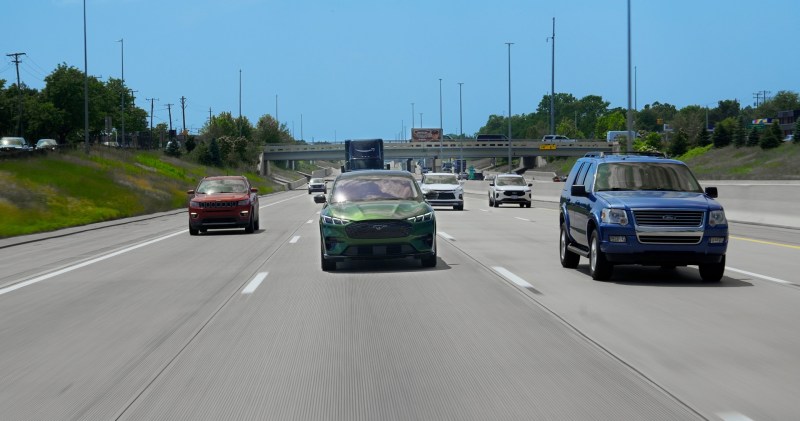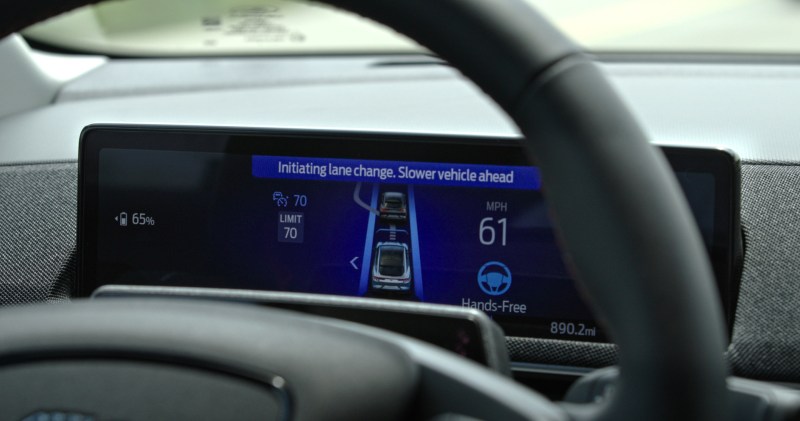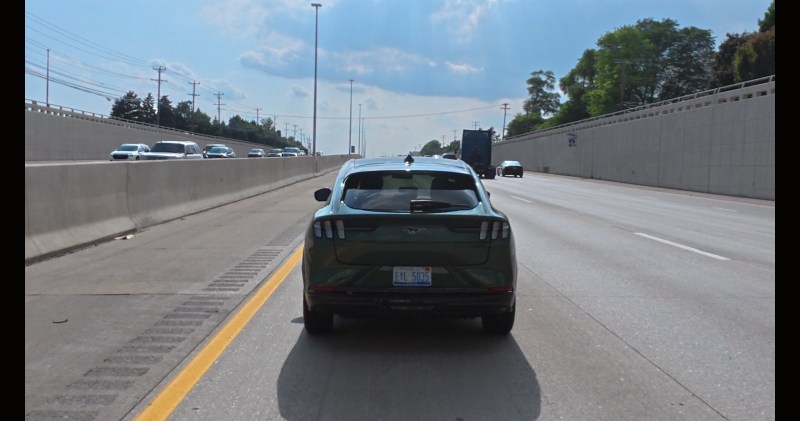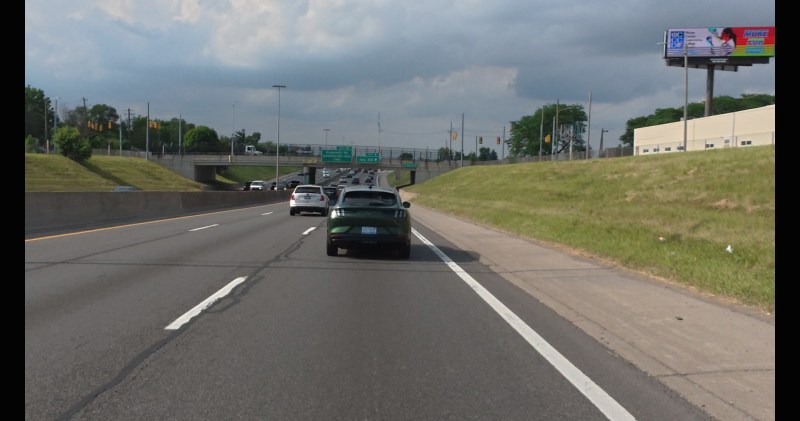Ford has unveiled BlueCruise 1.5, and fixed one of the system’s biggest shortcomings in the process. While the system previously allowed users to take their hands off the wheel and feet off the pedals, they would still have to manage one of the most common motorway tasks, but now that’s not always the case.
BlueCruise will now handle lane changes on its own in most circumstances. This means when the car in front of you is going noticeably slower than the speed you’ve set, and the lane beside you is clear, then the vehicle will automatically indicate and move over.
But what’s it actually like in practice? I recently commandeered a Mustang Mach-E with the new system installed so I could see what it is like.
45% of the time, BlueCruise will change lanes for you every time

The Dearborn-based manufacturer says that testing showed BlueCruise handling lane changes on its own around 45% of the time. When an automatic lane change is taking place, the driver will be alerted. But unlike the suggested lane changes that cropped up previously, everything else will be handled by the system.
Ford says that the update will result in users keeping their hands off the wheel longer than they could previously. All while maintaining a “smooth, natural, driving experience.”
You don’t have to let it happen

Of course, as with other current self-driving systems, the driver is still in control. Just as tapping the brake will take you out of BlueCruise and cruise control altogether–tapping the turn signal in the opposite direction of the lane change will cancel the vehicle’s action.
You can also turn the auto lane change option off in your BlueCruise settings, which pretty much leaves the system as it was previously. This is particularly handy if the vehicle is trying to move you a lane further away from your upcoming exit.
What was it actually like to (not) drive

You don’t really expect too much to change between self-driving system updates, but when I was behind the wheel and not doing much else, I really did feel like BlueCruise 1.5 was a strong step forward for Ford.
The automatic lane changes kick in pretty often and pretty consistently. While I didn’t want to annoy too many drivers by clogging up the “fast lane” in busy Detroit traffic, I got to experience the tailgating lane changes in action, too. Overall, the system seems to handle both kinds of lane changes pretty well. It feels safe, the car isn’t just swerving out into traffic, and it was always moving into a clear gap. Sometimes it didn’t want to overtake a slightly slower car, but as I said, that’s a decision you can make yourself by either tapping on the indicator stalk or (now) just upping your speed by about five miles per hour.
Of course, the one time it didn’t fire consistently was when the person in the passenger seat was taking a photo. Which is pretty typical and more to do with “press trip luck” than Ford’s software.
There is still some way to go

While this is a major step forward for Ford’s system, there is still a long way to go before you get to full self-driving. The use case Ford provides involves a BlueCruise-enabled car doing 55 mph encountering a truck doing 55 ahead of it in the lane. Normally, the cruise control system would slow the car down to the truck’s speed and await driver input.
Now, almost half of the time, the BlueCruise-enabled vehicle will move over automatically and continue going at its set speed. However, this doesn’t work all of the time and seems to be limited to this context. Similarly, it won’t move over for upcoming exits, motorways splitting, or police, tow trucks, and broken down vehicles on the shoulder. It’s a level 2 system, so you can’t get too comfortable. You are very much in charge of it.
Final thoughts

This is good news all around from Ford. The auto lane-change feature goes towards solving a very annoying problem with the system, and a price drop is always welcome. The ability to buy BlueCruise outright is also interesting, and we’ll find that plenty of drivers will stump up the extra cash, if only to avoid a monthly fee for what is one of Ford’s best high-end options.
Does this make BlueCruise the best level 2 system now? No, it’s more playing catch-up than anything. GM and BMW’s respective Level 2 systems have had this feature for a while. However, many systems still rely on a driver confirming a lane change, or have no auto lane change feature to speak of–so this update firmly puts BlueCruise on the higher end of things.




